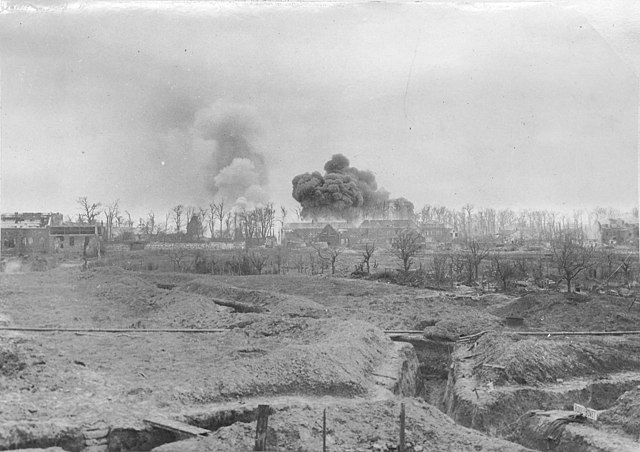 Image courtesy of Wikimedia Commons
Image courtesy of Wikimedia Commons
Drive through the rolling hills of northeastern France, and you may stumble upon something haunting: villages that exist only in name. No bakeries, no farms, no church bells — just signs at the roadside declaring “Village détruit” (“destroyed village”) and a scattering of memorial stones. These are the phantom villages of World War I, communities that were wiped off the map during the fighting and never rebuilt.
Verdun’s Sacrificed Communities
Most of these ghost villages are clustered around Verdun, the site of one of the war’s longest and bloodiest battles. From 1916 onwards, months of shelling and ground assaults obliterated not only soldiers but also entire towns. Places like Fleury-devant-Douaumont, Beaumont-en-Verdunois, and Haumont-près-Samogneux were reduced to craters and rubble.
After the war, France made a radical choice: rather than reconstructing them, the state designated these places as “villages morts pour la France” (“villages that died for France”). They would remain uninhabited, preserved as open-air memorials to the cost of war.
What Remains Today
Walking through one of these phantom villages is eerie. Paths trace where streets once ran. Stone markers indicate the site of a church, a school, or a farmstead — but the buildings themselves are gone. Nature has reclaimed much of the ground, but signs of the battlefield linger: fragments of walls, collapsed trenches, unexploded shells buried beneath the soil.
Yet each village still has a mayor. These symbolic mayors, often appointed from nearby towns, represent the memory of the lost communities. Annual ceremonies keep their names alive, ensuring they are not forgotten.
Why They Were Never Rebuilt
The decision not to rebuild was both practical and symbolic. The land was so devastated by artillery bombardment that farming or habitation was impossible. Soil contamination, unexploded munitions, and destroyed infrastructure made resettlement dangerous. But beyond practicality, there was a deeper reasoning: these villages were to stand as testimony. Their emptiness speaks louder than any monument.
Memory and Silence
Visiting today, you feel both presence and absence. The silence of these places contrasts sharply with the violence that created them. They are not ruins in the traditional sense; they are absences, carefully maintained so that forgetting does not fill the void.
France’s phantom villages are more than relics of war. They are reminders of the fragility of community, the human cost of conflict, and the choice to preserve loss rather than erase it.
The Lasting Echo
In an age when cities expand and villages fight to survive rural decline, these “villages that died for France” remain frozen in time — sacrificed, but not erased. They continue to bear witness, a century later, to the lives that once animated them and the violence that extinguished them.